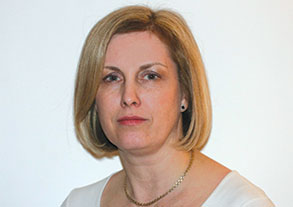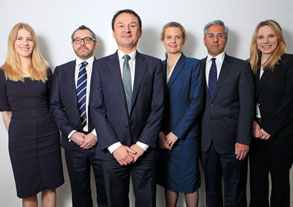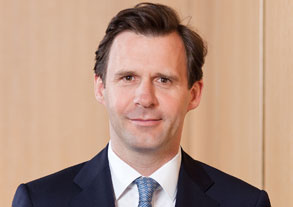

It’s hard to believe that a whole 12 months have passed since I last chaired the judging panel of The Treasurer’s Deals of the Year Awards. But a year has, indeed, passed and these have been a good 12 months for many corporate treasurers across the UK and continental Europe.
The markets have been calm, the funding environment has been favourable to businesses (particularly large corporates), and UK treasurers, at least, had the benefit of working in a flourishing economy. But treasurers haven’t used this stable environment as an excuse to rest on their laurels. Instead, they have been hard at work, helping their companies to get ahead now so that they are in a good place if circumstances change for the worse in future.
During 2014, there was plenty of M&A activity, especially in the pharmaceuticals and telecoms space. There was also a lot of refinancing action, with companies taking advantage of the benign market conditions and following the ACT’s tried and tested advice of “funding long and funding early”. Unsurprisingly, then, The Treasurer’s Deals of the Year Awards 2014 attracted more nominations than ever before. It also attracted nominations from more countries than ever before, with some Greek companies submitting nominations for the first time.
Treasurers tend to be incredibly able people and have a gift for making what they do look easy
Another significant point to note was that the most popular awards category for 2014 was the bonds under £500m category. In the past, it has been the bonds over £500m category that has tended to attract most interest. So this change in direction reflects a trend in smaller companies tapping the capital markets through bond issues, often for the first time. The judges had a particularly robust debate when judging this category, since it featured a number of strong contenders, all with very different achievements under their belts.
As a judging panel, we were very impressed with the quality of entries that we received this year. There were some remarkable achievements by treasury teams of all sizes, in a wide range of organisations. Since we had to take into account the individual circumstances of each treasury team – including the level of experience and market conditions they faced – this resulted in the panel having even more intense discussions than in previous years.
Treasurers tend to be incredibly able people and have a gift for making what they do look easy. But, as I have said before, treasury is a difficult and complex profession that requires a broad range of technical and personal skills. So the worthy winners and runners-up in this year’s awards should feel very proud of themselves.
As always, I am indebted to the members of the judging panel (see below) for their generosity with their time and their insight during the judging process. I am also grateful to Lloyds Bank for continuing to sponsor the awards. In addition, I would like to congratulate the ACT for carrying on with this very successful awards programme from year to year.
I hope you enjoy reading about the award winners and consider entering the awards yourself when nominations open later in 2015.
Lesley Flowerdew is group tax and treasury director at design, engineering and project management consultancy Atkins and chair of the Deals of the Year Awards judging panel

The Treasurer’s 2014 Deals of the Year and Treasury Team of the Year Awards were judged by:
In each category, we consider all types of deal, whatever their size or complexity, and judge them according to our criteria of sound treasury management, efficient pricing, optimal and innovative structures, and relative success in prevailing market conditions. The team awards recognise treasury teams’ considerable and enduring contributions to their companies. In a situation where there is a conflict of interest – for example, a judge’s company being nominated for an award – the relevant judge sits out the discussion.
In 2014, for the first time, The Treasurer’s Deals of the Year Awards attracted entries from Greece. This is both an encouraging indication about the health of the treasury profession within the southern European country, and about the heightened profile of the awards themselves.
Firstly, Hellenic Telecommunications Organization, which is normally known by its Greek initials of OTE, submitted a nomination in the bonds above £500m category for its €700m eurobond issued in July 2014. The bond enabled OTE to reduce its cost of debt, and extend and smooth its debt maturity profile. The issuance attracted immense interest from across the geographical and investor spectrum, including fund managers, banks, hedge funds and pension funds. Commenting on the issuance, OTE chairman and CEO Michael Tsamaz said that the demand for the bonds was “an acknowledgement of our strategy as well as of the prospects of the recovering Greek economy”.
Greece’s biggest electricity company, the Public Power Corporation (PPC), submitted a nomination in the same category for its inaugural €700m bond with three-year and five-year tranches. Pricing was tight and strong demand from investors allowed the issue to upsize by €200m. For PPC, the result meant it could diversify its funding so that it is no longer solely dependent on local and domestic financial institutions.

Media giant BSkyB’s £4.9bn acquisition of Sky Deutschland and Sky Italia, which was announced in July 2014, was the grand finale of a strategy that had been many years in the making. The enlarged entity – which has been simply renamed Sky – now becomes one of the largest television operators in Europe. It is expected to have revenues of £11bn and 20 million customers in a potential market of 97 million households.
By the standards of a FTSE 100 company, BSkyB’s treasury team was modest, consisting of just six individuals. Together, they were responsible for the group’s £6bn debt portfolio, interest rate and FX risk management, along with cash investments. BSkyB’s investments usually average around £500m, but they peaked at £6bn in the weeks before the acquisitions took place.
The acquisitions of Sky Deutschland and Sky Italia were largely debt-funded, so BSkyB’s treasury team was instrumental in the process of making them happen. The job was made more complex, since two large acquisitions were taking place at once. Sky Italia was 100% owned by 21st Century Fox, while Sky Deutschland was 57% owned by Fox and 43% publicly listed on the German stock exchange. Not only was the total funding requirement for the acquisitions unknown at the outset, there were three key challenges to overcome.
Firstly, once BSkyB had made an offer for 21st Century Fox’s shares in Sky Deutschland, there was a legal requirement for BSkyB to launch a public offer for the remaining 43% of publicly held shares at a minimum price of the last three months’ volume weighted average price. This meant the funding requirement could have had a potential swing factor of £2bn, with the final investment being anywhere from £6bn up to £8bn.
We have a lean department, so it was critical that everyone pulled in the same direction
Secondly, BSkyB was a sterling-functional company that was buying two euro-functional companies priced in euros and sterling from a US dollar-functional entity. Inevitably, cross-border transactions carry significant FX exposures, which needed to be clearly communicated to the independent board members.
Finally, while BSkyB’s balance sheet had been strengthening for some years, with leverage managed by share buybacks, this transaction would potentially test the leverage limits of covenants on the company’s existing revolving credit facility, as well as its credit ratings. Since the transactions would make a material difference to the company’s leverage, a downgrade was inevitable, but the board remained committed to holding an investment-grade rating.
BSkyB’s treasury team set to work to put a broad range of credit facilities in place. During a six-week period over the summer, they syndicated £6.6bn of underwritten facilities across 15 banks in two weeks. They then pre-funded €4bn by issuing bonds as soon as the markets opened in September. It was the company’s debut issuance on the continent. BSkyB also undertook a £1.4bn share placement to raise funds for the acquisition.

Simon Morley, Sky’s group treasurer, attributes the success of the deal to “a huge amount of meticulous planning, scenario testing and challenging our investment banks on a wide range of scenarios”. He adds: “We had extensive and detailed project plans and tracked progress religiously. We also dovetailed this planning across our excellent in-house and external legal teams, as well as with the bank teams advising on the transaction. We have a lean department, so it was critical that everyone pulled in the same direction.”
Andrew Griffith, Sky’s CFO, who nominated his treasury team for this award, described the team’s approach to financing the acquisitions as “balanced, insightful and fair”. He added: “Each leg of the transaction has gone incredibly well. I can think of no better way to help celebrate Sky’s transformation than for our first-rate treasury team to receive the external recognition they so richly deserve.”
Issuer: Sky
Amount: £6.6bn + €4bn
Structure: £6.6bn in syndicated underwritten credit facilities across 15 banks, €4bn euro bond issuance with five-, seven-, 10- and 12-year maturities
Rating (at time of deal): BBB+ (Standard & Poor’s) Baa2 (Moody’s)
Blended debt cost: Approximately 2%
“Sky stood out by a mile, even in a strong category with some great nominations. It was good to see the treasury team playing a core role in M&A.”
The German pharmaceutical company’s busy year started with the launch of a multi-tranche bond in January 2014, in order to finance the acquisition of its Norwegian counterpart, Algeta. This comprised €500m in two-year floating-rate notes, €750m in four-year fixed-rate notes and €750m in seven-year fixed-rate notes. It was followed by another €500m floating-rate note in March. Then, in May, Bayer put in place a $14.2bn bridge facility to acquire the consumer care business of US pharmaceutical company Merck & Co. After this came the launch of a €3.25bn hybrid bond. Finally, the firm issued a multi-tranche $7bn 144A/Reg S bond – its largest bond in history.

Irish airline Ryanair got off to a flying start with its first ever senior unsecured bond issuance in June 2014. It took advantage of low bond yields to raise €850m through seven-year notes. The coupon was a modest 1.875% – the lowest ever coupon for a eurobond in the airline sector and the joint-lowest coupon for a seven-year eurobond rated BBB+ – and there were no covenants. Proceeds from the single-tranche bond will be used for general corporate purposes.
There are very few investment-grade airlines and even fewer examples of European airlines receiving a public rating in recent years
Ryanair has ambitious plans to double in size from 81.7 million customers in the financial year ended 31 March 2014 to more than 150 million customers by 31 March 2024. During this period, it will have a multibillion-euro capex requirement, with 180 Boeing 737-800 and 100 Boeing Max-200 aircraft on order, and options to purchase a further 100 Boeing Max-200. The funds raised from the bond issuance will complement the multiple sources of secured and lease financing that the group has accessed historically.
In order to prepare for the issuance, Ryanair’s treasury team set about getting a credit rating for the group. “There are very few investment-grade airlines and even fewer examples of European airlines receiving a public rating in recent years,” explains John O’Flynn, Ryanair group treasurer. “It was therefore important to understand the methodologies used by the rating agencies and the likely range of outcomes.”
Not only did the team manage to secure a rating for the group, it succeeded in landing a prized BBB+ rating, making Ryanair the highest rated airline in the world. Next came a three-day roadshow, which involved the group’s CEO, Michael O’Leary, as well as its CFO, Howard Millar, and O’Flynn meeting investors in Amsterdam, Edinburgh, Frankfurt, London, Paris, Zürich and Scandinavia. A decision had been taken to issue in euros because the group’s assets are held in euros on the balance sheet, and the majority of its income is earned in that currency. The final order book was around 10 times oversubscribed.

Ryanair was extremely focused on the project, from top to bottom of the organisation, according to one nominating bank. It highlighted that the treasury team and CEO communicated the credit story very passionately, which led to “this huge success and further strengthening Ryanair’s cost advantage versus other airlines”. It is relatively rare for airlines to issue corporate bonds, but the bank went on to note that the transaction had “sparked significant interest and attention from other borrowers, both within and outside of the aviation industry”.
Commenting on the issuance, Millar said: “This low-cost financing, along with our attractively priced Boeing order for 180 aircraft, will enable us to reduce our aircraft ownership costs, and pass these savings on to our customers by continuing to offer the lowest fares in Europe, while growing from 82 million customers to more than 110 million per annum over the next five years.”
O’Flynn believes the success of the deal lies in the fact that investment-grade airlines are rare, which boosted Ryanair’s appeal with investors. “In addition, the comprehensive roadshow allowed us to educate the investor base regarding Ryanair’s key structural advantages, which have, uniquely for the industry, delivered consistently profitable growth.”
Issuer: Ryanair
Amount: €850m
Structure: Single-tranche eurobond
Rating (at time of deal): BBB+ (Fitch) BBB+ (Standard & Poor’s)
Currency and tenor: €/7yr
Interest rate: 1.875%
“It was a debut issue in a tough industry and the terms are pretty impressive. I smiled when I read it.”
French utility company EDF impressed judges with its €9.1bn (equivalent) multi-tranche bond issue in January 2014. It raised €5.1bn (equivalent) through multi-tranche senior notes. These included a 100-year sterling bond – the first ever century bond in sterling – which raised £1.35bn. It also raised €4bn (equivalent) through multi-tranche hybrid notes.
EDF undertook a roadshow involving more than 80 investors in order to market the issuance. It enlarged its order book with 100 more orders than in 2013. The nominating bank argued that with this transaction, “EDF reiterated its easy access across all markets and its ability to suit all types of investor needs”. EDF funded all of its financial needs for 2014 with this transaction

German utility company E.ON showed what you can do with a strong credit rating and capable treasury team last year when it persuaded investors to pay it for its debt.
In September, it issued a €113m exchangeable bond based on its 6.7% shareholding in Swiss energy company BKW. Within the four-year maturity, bondholders have the option to exchange their bonds into BKW shares held by E.ON at a predetermined price of €32.21 per share. This represents a 22.5% premium above the market price of BKW’s stock at the time the bond was issued.
Those investors who do not exchange their bonds until maturity will get back the principal amount they invested. The bond has a coupon of 0% per year and was issued at a price of 101. As a result, E.ON achieved a negative yield to maturity of -0.248%. The bond is the first negative-yield, equity-linked instrument in Europe, the Middle East and Africa since 2005, and the first from a German issuer since at least 2000.
It was one of the most technically challenging offerings to structure and coordinate in recent years
At the same time that E.ON issued its exchangeable bond, BKW issued its own CHF 163m convertible bond with a six-year tenor. That bond had a coupon of 0.125%. Together, the exchangeable bond from E.ON and the convertible bond from BKW marked the first concurrent exchangeable and convertible bond offerings since the financial crisis. The nominating bank highlighted that this was a significant achievement, pointing out: “Coordinating one structured, equity-linked offering is complex enough, yet here the issuers managed to bridge the different needs of two distinct companies, without creating conflicts of interest or impacting demand for each offering.”
It added: “It was one of the most technically challenging offerings to structure and coordinate in recent years, it was placed during volatile market conditions, and it achieved both companies’ pricing goals.”
The impact of the offering on BKW’s share price was minimal on the day the offerings were made, which was remarkable considering the combined deal size represented nearly 600 days of trading (ie it would have taken at least that many days for both the E.ON and BKW shares to be sold on stock exchanges).
E.ON’s CFO, Klaus Schäfer, was pleased with the way the offering had gone, describing it as “the best and most innovative way of monetising our remaining stake in BKW over time”.

According to Henryk Wuppermann, head of corporate finance at E.ON, the success of the deal can be put down to investor hunger for investment-grade debt in the equity-linked space: “E.ON is a large investment-grade rated company and convertible buyers normally only get high-yield paper. This, combined with low-interest yields, helped us to achieve the negative yield.”
But he adds that the deal also required “tailor-made structuring, a great deal of coordination with BKW and a good read of the markets”. Indeed, this turned out to be the last equity-linked deal in Europe for several weeks because the markets subsequently turned choppy.
Issuer: E.ON/BKW
Amount: €113m and CHF 163m
Structure: Exchangeable bond and convertible bond
Rating (at time of deal): A- (Fitch) A3 (Moody’s) A- (Standard & Poor’s) (Note: Ratings above apply to E.ON. BKW is not rated)
Currency and tenor: €/4yr; CHF/6yr
Interest rate: -0.248%/0.125%
“It’s a knockout deal. It was handled extremely well, the execution was incredibly successful and it achieved an important strategic objective.”
Retailer Debenhams secured its first ever public rating in 2014 and issued its first public bond – all without having a CFO. Neither the lack of a CFO nor challenging trading traditions dampened investor appetite, however, and Debenhams was able to issue a £225m high-yield bond in June, upsized from £200m. Strong demand meant that pricing was tight, coming in at 5.25%. The bond was part of a refinancing exercise during which Debenhams restructured its balance sheet, extended its debt maturity profile and extended its existing revolving credit facility to £425m. Debenhams drew on its strong relationships with three relationship banks during the bond issue and refinancing.
In February 2014, banknote substrate producer Innovia issued its debut public bond before it had signed its contract with the Bank of England to supply polymer substrate for the forthcoming new £5 and £10 notes. The issuance, six-year, senior secured, floating-rate notes, raised €342m at 500bps above Euribor at 99.5.
The high-yield bond refinanced existing debt and extended the maturity profile by six years, while also providing added finance to enable a €50m capital expenditure programme to be completed. It also included a portability feature that anticipated a potential change in the shareholder group. New equity investors were introduced without triggering a debt refinancing.

In September 2014, German pharmaceutical company Merck arranged the largest corporate acquisition financing in Europe since the financial crisis struck in 2008. It secured a $15.6bn dual-currency loan facility to finance its acquisition of US life science company Sigma-Aldrich. The acquisition, which was the largest M&A transaction in Merck’s history, will support the transformational development of its life science business. The loan was in US dollars as a base currency, but with the option to draw in euros.
From Merck’s point of view, the financing package was very favourable, since the banks provided financing on a ‘certain funds basis’ without any financial covenants and with limited restrictions. The pharmaceutical company also negotiated long availability periods and maturities, which would safeguard the availability of the financing.
We had intensively screened the market for financing terms and conditions
This was important since there is uncertainty over the date when Sigma-Aldrich shareholders will be paid out due to the requirement for anti-trust approvals. Merck expects the transaction to complete by the middle of 2015. Furthermore, the financing conditions meant that the acquisition immediately began to contribute to Merck, having increased earnings per share while providing sufficient flexibility for fast deleveraging.
The credit facility consists of an $11.6bn bridge facility (Tranche A) with a likely tenor of 30 months and a $4bn three-year term loan (Tranche B). Various types of bonds and bilateral loans that are already in place will be used to refinance Tranche A. Meanwhile, Tranche B, as well as existing bilateral loans, will be repaid over the coming years through operational cash flows.

Overall, the facility provided “excellent terms and conditions”, according to Merck’s head of group treasury, Rando Bruns. “We had intensively screened the market for financing terms and conditions in the six to 12 months prior to this transaction, as an acquisition was expected at some point. Therefore, we had a very good understanding of market standards and where the best pricing and conditions currently were.”
When the transaction was announced, Merck called all its relationship banks to discuss the transaction, the financing structure and syndication process, and invited them to attend a meeting of bankers the following week. Detailed information about the financing and take-out structure was given at the meeting. The company explained the concepts of ‘active bookrunner’ and ‘passive bookrunner’, and advised the bankers that it had already allocated a role to each bank in the syndication process. This approach was possible because Merck had a good understanding of the capabilities of its banks. It also saved the company from having to undertake “a burdensome beauty contest”.
The outcome was that the syndication process was fast and lean – it completed within four weeks. Bruns says that all the banks in the syndicate were happy with their role in it – something he notes is “rarely achievable”. He puts down the success of the deal to good preparation, having a solid track record in the market, and following a simple and transparent process.
Issuer: Merck
Amount: $15.6bn
Structure: $11.6bn bridging facility and $4bn three-year term loan
Rating (at time of deal): A3 (Moody’s) A (Standard & Poor’s)
Currency and tenor: $/3yr (30 months for bridging facility)
Interest rate: Not disclosed
“The scale of the loan was impressive. While there were a number of M&A loans in 2014, this one was especially big and complex.”
Packaging company DS Smith landed the runners-up spot in this category with its £800m revolving credit facility (RCF) and €300m term loan. It managed to trim its margins nicely with the financing package, reducing its RCF by 35bps and its term loan by 150bps. With its term loan, it secured financing for three years. With its RCF, it went even further – out to seven. It secured less restrictive documentation, including the removal of a major financial covenant. It also managed to rationalise its bank group from 16 to 12, despite increasing overall borrowing limits. A good effort all round by the small, three-strong treasury team that works for the unrated corporate.

British supermarket J Sainsbury has a ‘20 x 20 Sustainability Plan’ that sets out 20 ambitious commitments that it plans to achieve by the year 2020. These include doubling the amount of British food that it sells, increasing the amount of fairly-traded products that it stocks, ensuring its suppliers adhere to high standards in terms of animal welfare and the social and environmental impact they have, and sourcing its fish and raw materials sustainably.
It decided to undertake a green loan, because it wanted to demonstrate its commitment to carbon reduction, embed sustainability into the supply chain, and diversify its investor base
It also aims to cut its operational carbon emissions by 65% relative to 2005, reduce its own-brand packaging and demonstrate ‘robust water stewardship’ by ensuring that its supply chain is sustainable in all areas of water vulnerability. On top of this, it has made commitments to donate large sums to charitable causes and to be known as a great place to work by engaging with employees and encouraging greater diversity in the workplace.
Against this backdrop, J Sainsbury made history in July 2014 when it arranged the first ever corporate green loan. It decided to undertake a green loan, rather than a standard loan, because it wanted to demonstrate its commitment to carbon reduction, embed sustainability into the supply chain, and diversify its investor base.
The five-year loan for £200m took the form of a conventional corporate loan while being underpinned by clear environmental commitments. Lloyds and Rabobank acted as joint green arrangers for the loan and Rabobank acted as sole mandated lead arranger.
Explaining the decision to work with these two banks, J Sainsbury treasurer Richard Learmont says: “We were aware that Lloyds and Rabobank have sustainability as a core value and both are recognised leaders in the area of green financing. Also, Lloyds and Rabobank were relationship banks and therefore suitable and trusted counterparties with which to develop the transaction.”
The proceeds of the loan will be used to fund clean energy generation, energy-efficiency and water-saving projects over a period of two to three years. It is consistent with the 2014 Green Bond Principles, which act as voluntary guidelines for the development and issuance of green bonds, and has been accredited as ‘green’ by Sustainalytics, a third-party sustainability consultant. The loan will be independently measured and monitored to evaluate its use and positive environmental impact, and J Sainsbury will publish progress on green investments and carbon emission savings on its corporate website.
J Sainsbury CFO John Rodgers has said that the green loan “demonstrates our commitment and leadership in carbon reduction and sustainability, and shows the value we attach to environmental improvements”.
“We think that by establishing our credentials in the green financial market we are opening up the opportunity to tap into a new green investor base,” comments Learmont. “We are currently in discussions regarding a potential new transaction with a non-relationship green lender.”
The nominating bank commended J Sainsbury for its “seamless communication and teamwork”, particularly singling out the treasury team, project teams on the ground and sustainability professionals, for their hard work and input.
Issuer: J Sainsbury
Amount: £200m
Structure: Green term loan
Rating (at time of deal): Not rated
Currency and tenor: £/5yr
Interest rate: Floating rate above six-month Libor
“It’s new. What makes J Sainsbury different is that it is a loan and not a bond.”
Inspection company Intertek arranged an $800m syndicated loan facility that included a tranche of offshore Chinese renminbi worth $50m. The transaction is thought to be the first loan facility in the syndicated loan market in Europe, the Middle East and Africa to include a renminbi tranche within the revolving credit facility. The transaction was part of a broader refinancing of Intertek’s core debt facilities, which act as the primary debt-funding source for the group. Overall, the refinancing enabled Intertek to extend its maturity profile and benefit from additional liquidity for a period of five to seven years, subject to extension options.

The Deals of the Year Awards don’t have much in common with reality television shows except in one respect: the journey is important. And when it comes to journeys, it is hard to beat the long voyage that Royal Mail has been on over the past few years.
In October 2014, Royal Mail was listed on the London Stock Exchange in what was the biggest government flotation for two decades. Investor interest in the initial public offering (IPO) was intense, and shares rose by an impressive 38% on the first day of trading. Royal Mail’s treasury function, consisting of seven professionals, was involved in many of the capital structuring decisions and due diligence exercises in preparation for the IPO.

“We worked with government to ensure that Royal Mail had an appropriate capital structure for the IPO and then established a syndicate of banks to put in place the necessary financing,” says Matthew Rose, group treasury and taxation director at Royal Mail. “This was partly used to repay facilities previously provided by the government. There was a significant level of documentation to review before the IPO and transfers of funds to manage on the day.”
Rose says that Royal Mail was “pleasantly surprised” by the range of banks willing to join its syndicate, especially since it had never had unsecured funding before. “We met a number of banks to talk through our respective strategies and how we could best work with one another,” he explains. “Royal Mail was a new credit customer for many banks, so much of the discussion focused on explaining our business and marketplace. The final facility was sized at £1.4bn and was provided for by a syndicate of 13 banks – across two tiers. Some of these were new relationships.”
Just nine months after privatisation, Royal Mail tapped the markets with its first bond issue as a privately owned company
In July 2014, just nine months after privatisation, Royal Mail tapped the markets with its first bond issue as a privately owned company. It raised €500m through a 10-year eurobond with a coupon of 2.375%. Some £350m of the proceeds were used to pay down short-term debt. Treasury had managed to secure a debut mid-BBB credit rating from Standard & Poor’s after successfully communicating a complex credit story to European investors.
“Royal Mail’s treasury team has focused on securing new sources of funding for the group at competitive rates,” says Rose. “The group’s average rate of borrowing has fallen from over 8% in the year to March 2013 to around 3% now. A key government objective for the IPO was to open Royal Mail to private-sector capital.”
But the transition from government ownership to private ownership has inevitably presented new challenges to Royal Mail’s treasury. “It has brought new stakeholders and we have therefore had to focus more on developing and maintaining relationships with our debt holders and credit rating agency,” says Rose.
Furthermore, the change means the team has had to get used to life in the spotlight. “As a high-profile organisation, Royal Mail has always been subject to significant scrutiny,” notes Rose. “But we recognise that we now have a new set of stakeholders from across the financial spectrum and we have invested in our equity and debt investor relations and company secretarial capabilities, accordingly.”

Rose describes a strong treasury team as one that “can operate with competence and integrity, and ensure that the company’s commercial objectives are supported by its financing strategies and policies”. He adds: “It is vital to be able to communicate effectively with, and be seen as trustworthy by, all relevant stakeholders, including the CFO and board.
The secret to success, he says, is having the professional and personal skills to be able to “influence and negotiate with both internal and external parties”.
The nominating bank praised Royal Mail’s treasury team for showing “strong leadership”.
“Royal Mail has gone through a lot of change and it has also done some challenging transactions in difficult times.”

Although Phoenix Group is the UK’s largest consolidator of closed life and pension funds, its strategy of consolidating closed life funds had been on hold since 2009. Thanks to its treasury team, however, it restructured its balance sheet in 2014, which has allowed it to return to that strategy.
The group’s refinancing plan involved the disposal of a non-core part of the business; management activities to accelerate cash flows; a reduction in the group’s leverage from 44% to 35%; the issuance of an unrated £300m bond; and the renegotiation of four senior and subordinated facilities with a single £900m syndicated senior unsecured bank loan based on Loan Market Association investment-grade terms.
These latter two achievements were particularly impressive given that Phoenix Group’s relationship with lenders and investors has been rocky in the recent past. In 2009, some of its bank lenders had to accept a substantial write-down following a restructuring of the group. This was followed in 2010 by a write-down of 15% on £500m in hybrid bond debt.
Group treasurer Rashmin Shah believes that the unrated bond issue and the debt refinancing with a willing group of relationship banks marked “major milestones in the rehabilitation of the company with lenders, positioning the company with a balance sheet and an investor base aligned with its acquisition strategy”.
The bond was innovative for a number of reasons. Firstly, it was an unrated transaction from an issuer with a sub-investment-grade credit profile yet it was aimed at high-grade UK institutional investors and hedge funds. It also contained a limited number of high-yield-style covenants that fall away once the bond is rated investment grade. In particular, there is no dividend restriction contained in the bond terms, which is important since the group may need to issue equity as a part of its acquisition strategy. The bond was sold as senior paper while only being temporarily subordinated to £1.4bn of bank debt.
Skilful negotiation by Phoenix Group’s treasury helped the group to achieve a set of terms that is more favourable than you might expect for an unrated credit, while still being acceptable to investors. As a debut bond, the transaction carried significant execution risk, and this was magnified by its unrated and structurally subordinated status. This was managed by extensive due diligence prior to, and during, a three-day UK roadshow. The seven-year bond priced inside of initial price guidance, with the annual coupon being 5.75% and the order book being two times oversubscribed.

At the same time, the Phoenix treasury team was concluding negotiations for the refinancing of the group’s bank lending arrangements, which culminated in the £900m drawn bank facility. This facility retained many existing lenders, some of whom significantly increased their exposure. It also attracted new lenders, which demonstrates the progress that the group has made in rebuilding relationships. The new facility replaced a number of secured loans that had highly restrictive terms and covenants, and divided the group into two silos. In contrast, the new unsecured facility enables the free movement of cash and capital around the group. It consists of a £450m amortising term loan and a £450m revolving credit facility, both of which are fully drawn. Meanwhile, the margin of 350bps over Libor is significantly below the cost of its previous main facility, which cost Libor+475bps.
We had an incredibly successful year in 2014 and we have been recognised throughout the group
The market capitalisation of the group is £1.7bn. Its share price increased by approximately 16% in the month following the announcement of the signing of the new bank facility, and by a total of 20% following the launch of the bond in June.
In addition to all these achievements, the five-strong treasury team engaged in business-as-usual activities in 2014, including the management of around £1bn in cash (which forms part of the group’s capital base) and the maintenance of a strong risk management framework.
Alison Stevens, deputy group treasurer of Phoenix Group, says the team is “dedicated and highly motivated”. She adds: “We had an incredibly successful year in 2014 and we have been recognised throughout the group, including at board level, for what we have delivered, and the strategic and economic value we have contributed.”
Commenting on the achievements of the Phoenix Group treasury team, the nominating bank said: “Overall, the team has smoothed Phoenix’s amortisation profile, positioned the group to achieve an investment-grade rating, and aligned the financing structure to Phoenix’s strategy of acquiring closed life funds.”
“The Phoenix Group treasury team got their teeth into plenty of things in 2014. They had to work hard over time to get where they did.”

If you’re looking for a treasury team that knows how to do a lot in a short space of time, then look no further than the 14-strong treasury and finance team of German residential landlord Deutsche Annington. It has barely stood still over the past couple of years.
In 2013, its most significant achievements included securing an investment-grade credit rating for the group and arranging the refinancing of €4.3bn in commercial mortgage-backed securities. That year the group also undertook an initial public offering, which facilitated the exit of its majority owner, Terra Firma Capital Partners.
Then, during the course of 2014, the Deutsche Annington treasury team juggled various different projects, including a €2.4bn strategic growth financing, financing to modernise 11,000 residential units in conjunction with German development bank KfW, and the launch of four benchmark bonds as well as two hybrid bonds.
We were the first real estate company to go down the unsecured route
Not only this, but the team also reorganised itself into a front-, middle- and back-office structure, introduced a new treasury management system, and built up a new risk control function. Meanwhile, the nature of the reorganisation meant that new processes had to be structured, tasks had to be reallocated and additional personnel had to be introduced.
Recognising the importance of speed and agility in the acquisition process, Deutsche Annington’s treasury team created a new key performance indicator (KPI) called ‘time to market’. This relates to how quickly and cost-efficiently the company can raise finance, and its aim is to give Deutsche Annington a competitive advantage in the marketplace. Treasury explained the KPI to the rest of the organisation via so-called ‘interactive mini roadshows’, which helped to reinforce its positive reputation.
Deutsche Annington’s treasury had a chance to prove the effectiveness of its new KPI when the company announced the successful acquisition of two real estate companies, with a total of 41,000 units, on the same day in February 2014. To finance the acquisitions, the company placed a €700m hybrid bond in April, followed by a €500m eight-year bond in July. The eight-year bond’s low interest rate of 2.125% confirmed the confidence that the capital markets have in the company. Deutsche Annington also raised €304m through equity via an accelerated bookbuilding process.

In October 2013, Deutsche Annington became the first European real estate company to issue corporate bonds in the US when it launched a $1bn bond placement. Two months later, Deutsche Annington’s treasury topped off a busy year by launching a successful €1bn perpetual hybrid bond with a coupon of 4% and a first call date of 17 December 2021. These funds, in addition to a €6.5bn term loan, will be used to finance the group’s envisaged acquisition of Luxembourg-based real estate company Gagfah.
According to Thorsten Arsan, head of structured finance at Deutsche Annington, the past 24 months has been a challenging, if exciting, period. “The German real estate industry is used to traditional bank loans,” he explains. “We were the first real estate company to go down the unsecured route, issuing unsecured corporate bonds.”

Arsan describes this time as an era of transformation. But the transformation means the group’s treasury team is more efficient than before. “As of today, €7bn of debt is managed by 14 people,” Arsan notes. “This is very efficient. We have high-quality people, efficient processes and efficient capital markets products.”
Lars Schnidrig, MD, finance and treasury, at Deutsche Annington, attributes the team’s success to being “highly committed and dedicated to performance” as well as coming from a wide range of backgrounds, including rating agencies, banks, treasury transformation and traditional treasury.
“Deutsche Annington has a small treasury team, but it has done a lot of transactions in a very short time frame.”
Netherlands-based landline and mobile telecommunications company KPN also impressed judges in this category. It was praised for executing a wide range of capital markets transactions while also managing day-to-day treasury activities for a rapidly changing business. In November 2014, it completed the largest bond repurchase transaction to have taken place in Europe over the prior three years. In total, it targeted €8bn of nominal outstanding bonds.
Sally Percy is editor of The Treasurer
